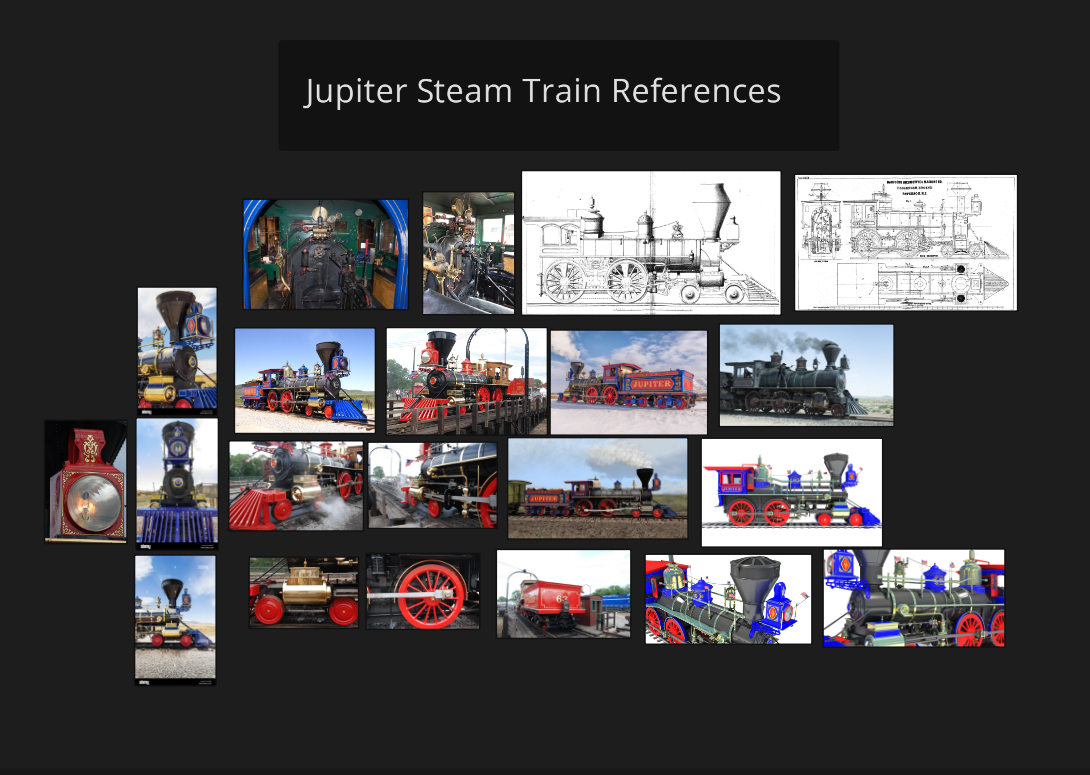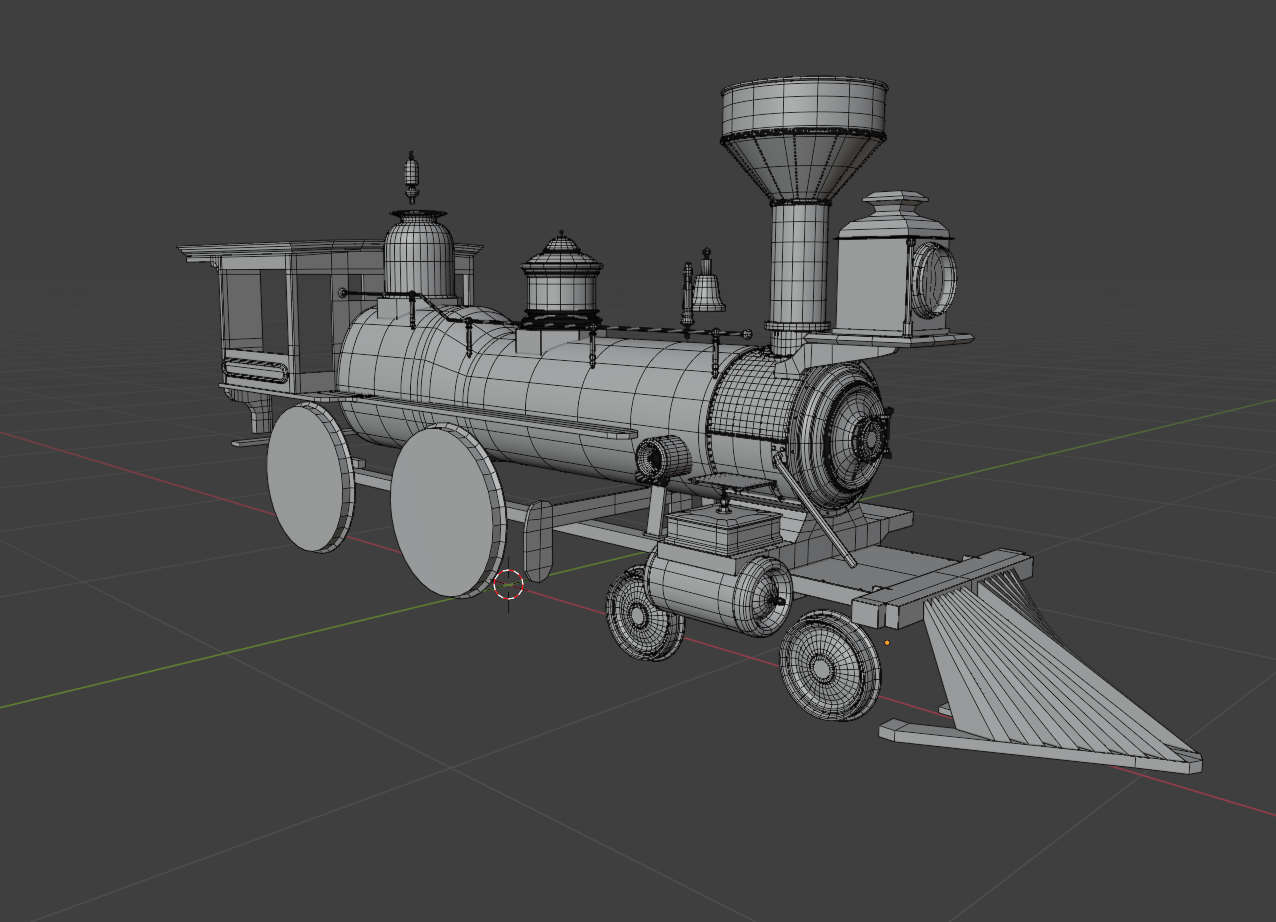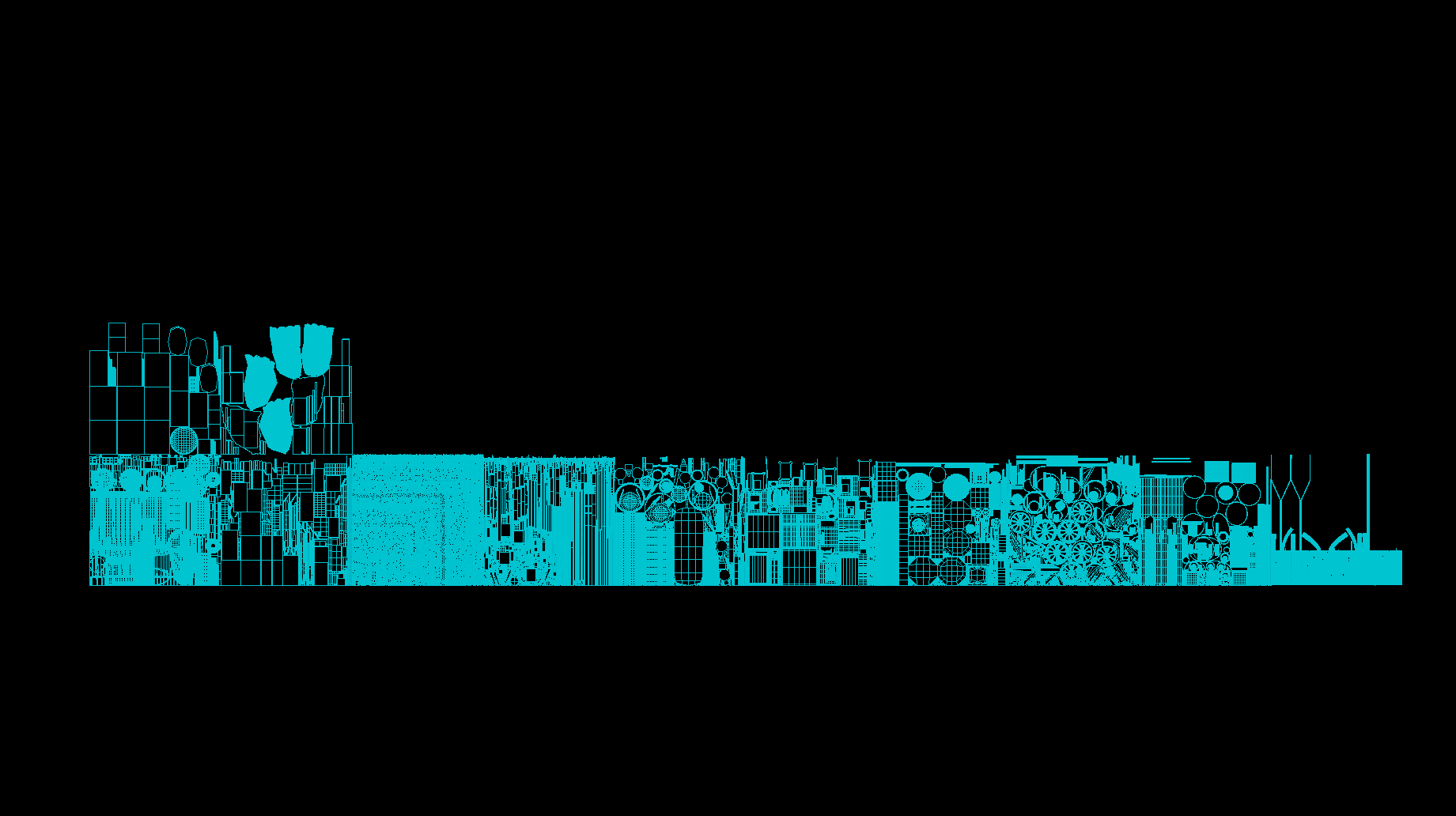
Jupiter
2024-10-21 | Solo Project
A case study on USD asset creation.

Introduction
USD has become the “Buzz Word” for the animation and visual effects industry. And I felt (as an aspiring Generalist TD), that learning how USD works would be crucial for landing a job outside of university.
In an effort to explore the capabilities of USD, I decided to create Jupiter, an American steam train from the late 1800s. I’ve always wanted to model a steam train, and I love the wild-west style of the Jupiter. I spent a total of 2 and half months working on this project, and this is by far my favourite asset I’ve worked on yet.

I began the project by looking for references online, I used PureRef to bundle them together so I could easily look at them when needed.
Modelling
To explore the benefits of USD’s cross DCC abilities, I decided to model inside of Blender. I’m a huge fan of Blender’s modelling tools, and once I transferred the asset into Maya, I polished the model and created the UVs. This was my “payload” file for my USD asset. It contained all the geometry data, including UVs for shading.


Above is the final model of Jupiter. The hardest part of the asset was getting all the intricate details inside the train, as there weren’t many references images of those areas.
Lookdev
Once the payload was finished, I began working on shading and lookdev. I was able to convert Albin Merle’s free Blender lookdev environment into USD, which I could open and use inside of Maya and Houdini.
With Substance painter, I working on getting the nice wear and tear of an old train. I was also able to make a shading variant look called “dull”, which looks cleaner and more toy-like.
I did my rendering inside of Maya using Arnold, however the asset also works with Houdini’s Karma.
Conclusion
Overall, I’m very happy with this asset. If I had more time to work on it, I would look into rigging and animating it, as well as combining it with FX in Houdini. This project has helped me gain better understanding of USD, and how it works in the animation and VFX pipeline, and I can’t wait to use it in more of my projects.
Written Oct 21, 2024 by Christopher Hosken